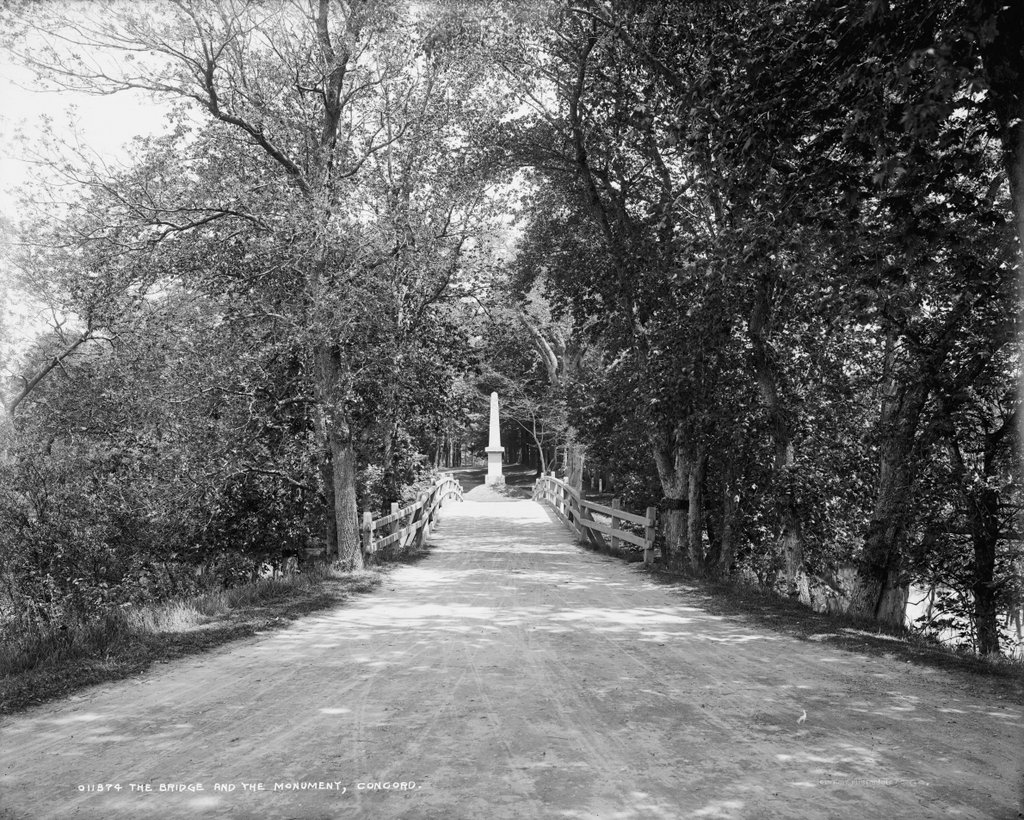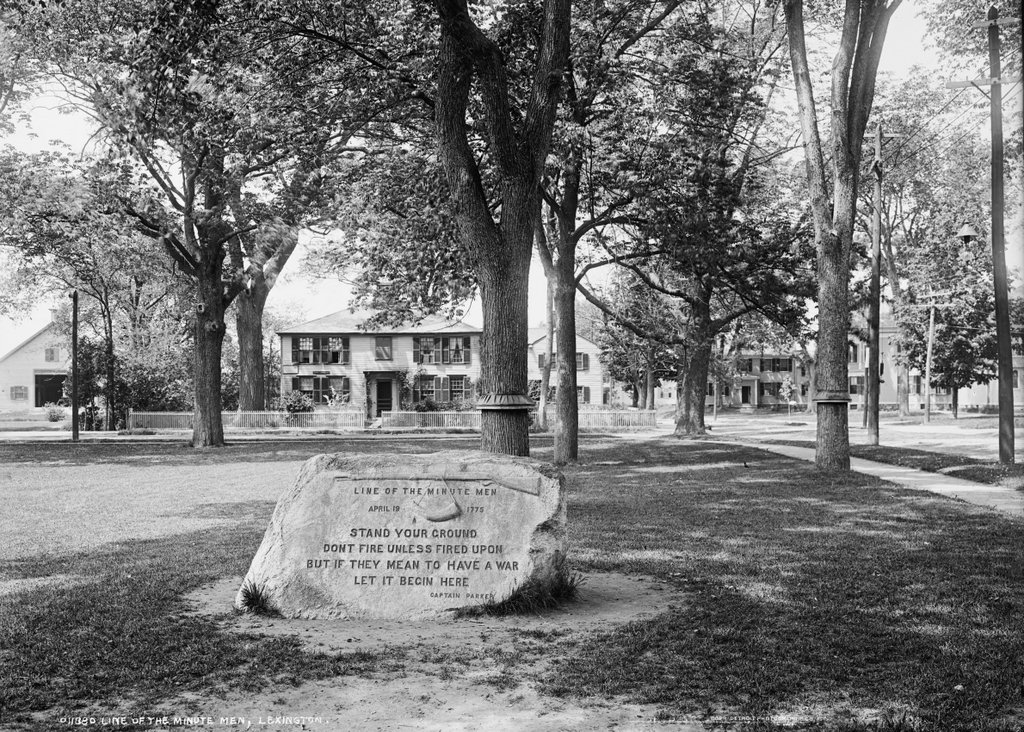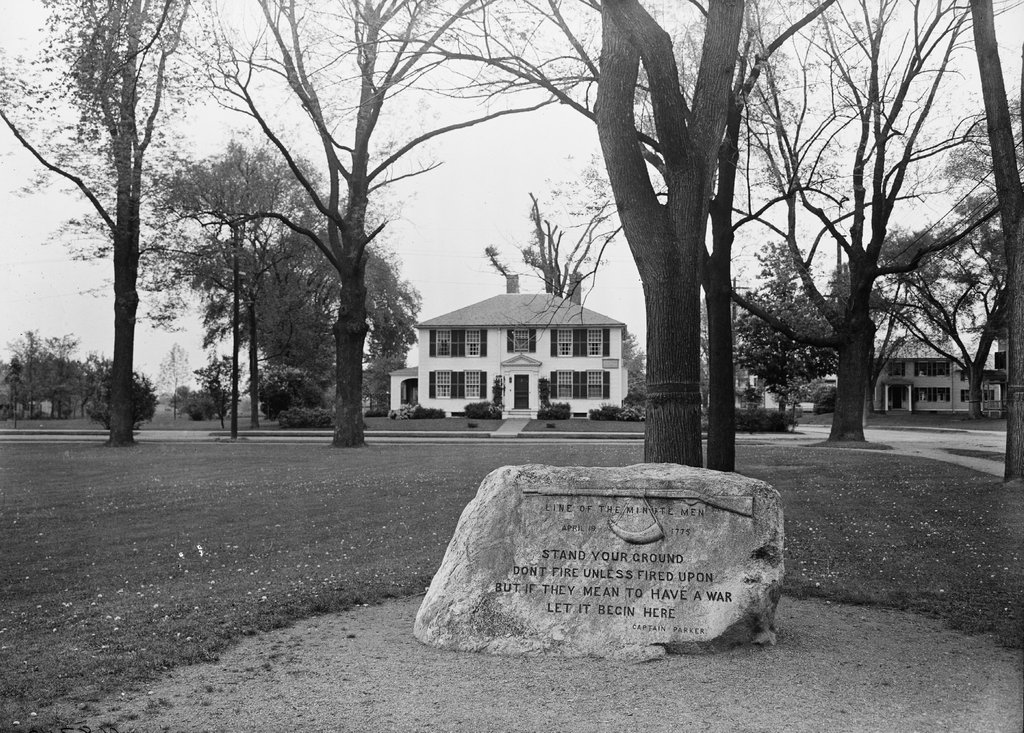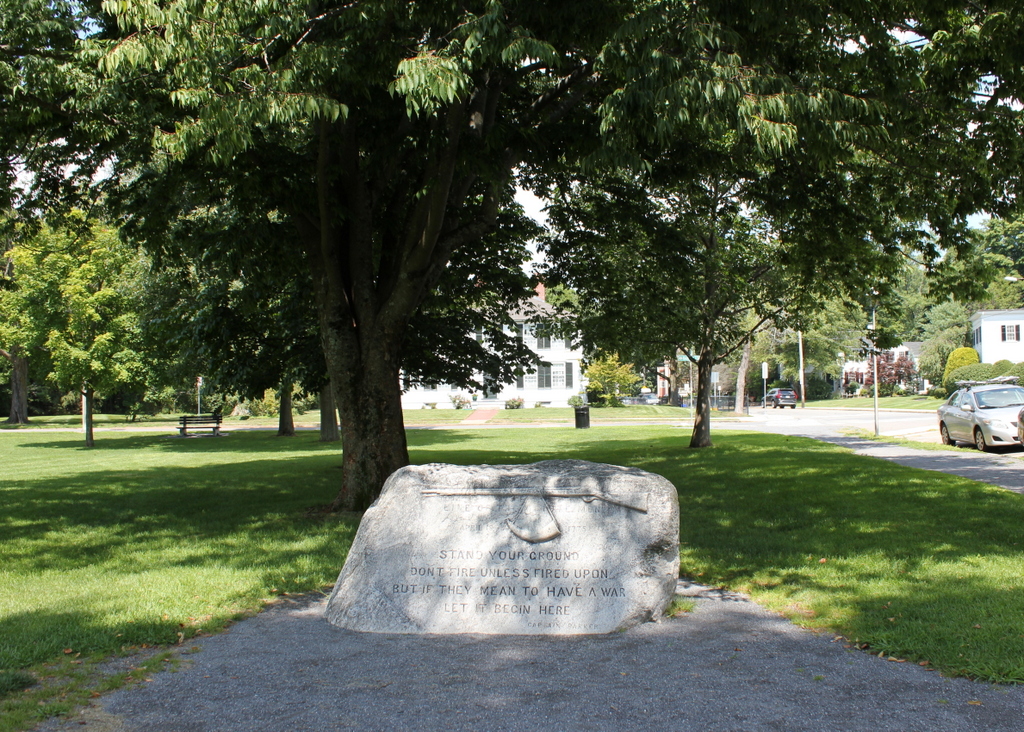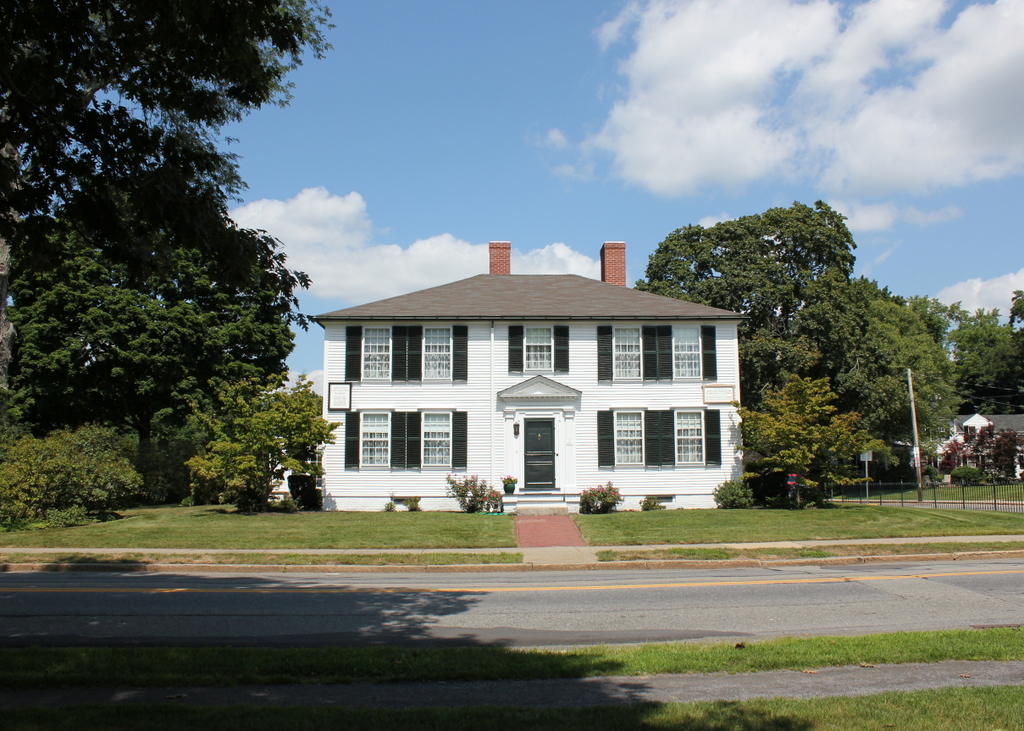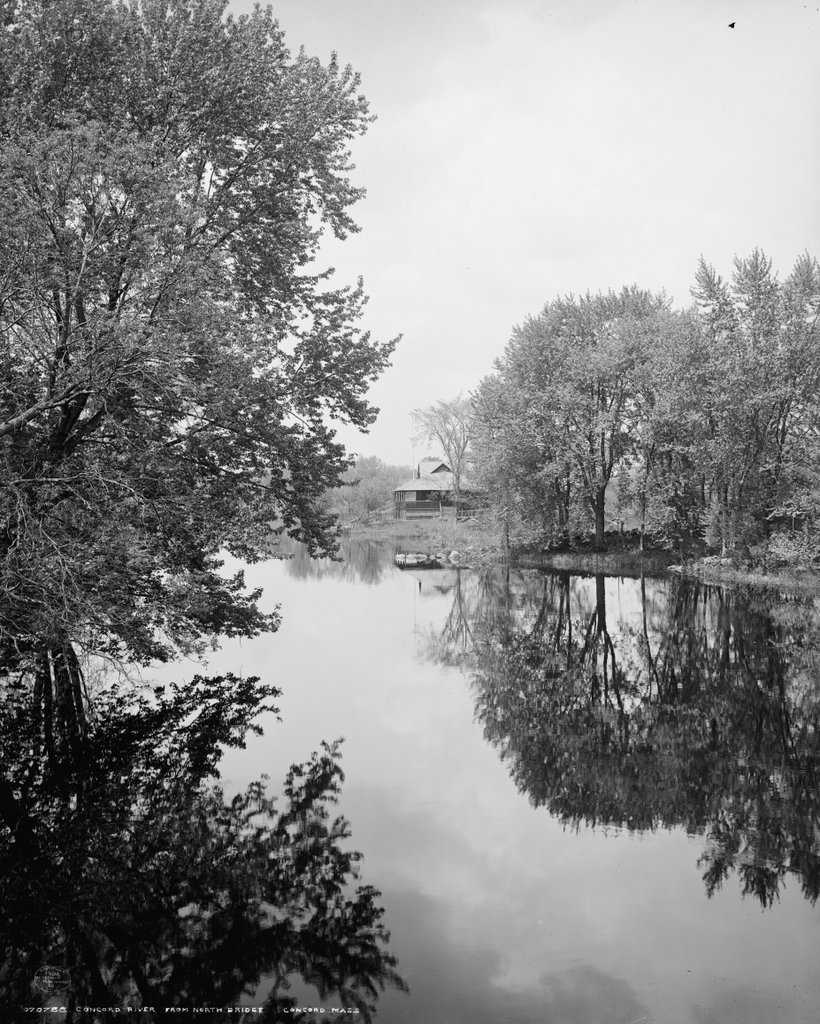The Minute Man, a statue on the west side of the Concord River at the Old North Bridge in Concord, around 1906. Image courtesy of the Library of Congress, Detroit Publishing Company Collection.
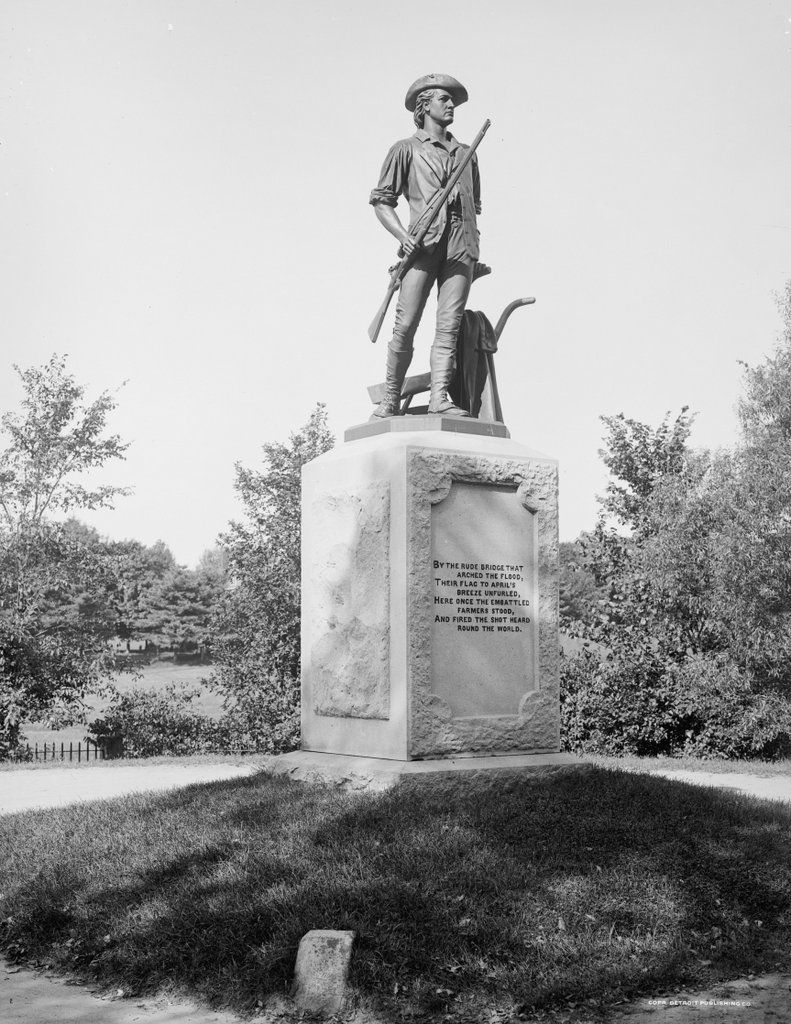
The statue in 2018:

This statue, which was dedicated in 1875, marks the site of the Battle of Concord, which was one of the opening events of the American Revolution. It stands on the west side of the Old North Bridge, on the spot where the colonial militiamen assembled on April 19, 1775 and fired the famous “shot heard round the world” at the British redcoats on the east side of the river. This short skirmish lasted less than three minutes, but it forced the British to abandon their search for colonial military supplies and retreat to Boston. This was the first military victory of the war for the colonists, and it was also the first time that British soldiers were killed in combat during the war.
The first monument at the battlefield was a granite obelisk, which was installed in 1836 on the east bank of the river. It was dedicated a year later, and the ceremony included the singing of a poem, “Concord Hymn,” which Ralph Waldo Emerson wrote for the occasion. The poem is best known for its opening stanza, which reads:
By the rude bridge that arched the flood,
Their flag to April’s breeze unfurled,
Here once the embattled farmers stood,
And fired the shot heard round the world.
The obelisk was placed on the east side of the river because, at the time, there was no longer a bridge across the river here, and the east side was more accessible from the center of Concord. However, this meant that the monument was actually on the spot where the British fought. This motivated one local resident, Ebenezer Hubbard, to bequeath money to the town for the construction of a new bridge and the creation of a new monument on the west side, where the militiamen had fired their famous volley.
This gift came only a few years before the 100th anniversary of the battle, so over the next few years the town prepared for a large celebration. Boston architect William R. Emerson designed a new bridge, and the town commissioned noted sculptor Daniel Chester French to create the statue. Both the bridge and the statue were completed in 1874, and the town also built two large tents in preparation for the event, which were located to the west of the statue, on the hillside in the distance of both photos. One tent was for orations, and it could fit about 6,000 people, while the other was a dinner tent that could seat 4,500 people.
The statue was formally unveiled at the centennial celebration, which was held on April 19, 1875. The festivities ultimately drew crowd of some 50,000 people to Concord, far exceeding the capacities of either tent. There were a number of dignitaries here at the event, including President Ulysses S. Grant, Vice President Henry Wilson, and four members of Grant’s cabinet: Secretary of State Hamilton Fish, Secretary of War William W. Belknap, Postmaster General Marshall Jewell, and Secretary of the Interior Columbus Delano. Grant’s former Attorney General, Concord native Ebenezer Hoar, presided over the event, which also included brief remarks by Ralph Waldo Emerson and the recitation of a poem by James Russell Lowell. The main orator for the day was George William Curtis, who spoke about the history of the battle and how its lessons can be applied to the present day.
The Minute Man was well-received by the public. An article, published in the Boston Globe on the day of the ceremony, provided the following description of the statue:
[I]t is of heroic measure, more than seven feet in height, generously proportioned, and represents a young man turning at the hurrying call of the messenger from his labors in the field, and instantly ready for duty. His left hand rests a moment on a handle of his abandoned plough, across whose upper brace his coat is flung, his right hand grasps the old flint-lock musket; he rests on his left foot, while his right is just leaving the ground behind—the whole attitude indicating a moment’s pause, as if to listen. The figure is attired in the traditional continental costume, and will preserve its details for future ages. . . .
The features are strongly marked and bear the energy, the self-command, the ready shrewdness, immediate decision, and, above all, the air of freedom that belong to the New England face. The frame is stalwart, the shoulders squarely held, the muscles of the bared forearm—the one that leans strongly on the plow, the one that strongly grasps the musket—are tense and unencumbered by flabby flesh; the great veins stand knotted on the strenuous hands. The man is alive from head to foot, and indeed we know not where there is better represented the momentary pause of vigorous action than in this noble statue.
The statue stands atop a 7 1/2-foot granite pedestal, which was cut from the same boulder as the older monument on the other side of the river. The east side of the pedestal, shown here in this view, has the first stanza of Emerson’s poem inscribed on it, and on the other side is the date of the battle and the date of its dedication. The site of the statue is 110 feet west of the bridge, in line with it and the other monument. This spot is said to be where Captain Isaac Davis fell during the battle, becoming one of the first colonists—and the first officer—to be killed in the American Revolution.
Today, nearly 150 years after it was unveiled here, and more than a century after the first photo was taken, the statue still stands guard over the Old North Bridge. The statue itself looks essentially the same as it did in the first photo, although the surrounding area has seen a few changes. At the time, the statue was surrounded by a hedge, which had originally been planted for erosion control. Another hedge of Japanese barberry was later planted here, although it was ultimately removed in the late 20th century. Other changes include the base of the statue. Concrete curbing was installed here in 1909, probably soon after the first photo was taken, and in the late 1950s it was replaced by new granite curbing, along with granite slabs at the front and back of the statue.
Over the years, The Minute Man has remained an iconic symbol of the American Revolution, as well as one of the most important works of 19th century American sculpture. French made a number of smaller copies of the statue, including one that is now held by the Smithsonian, and images of the statue have also appeared in a variety of other mediums. For the 150th anniversary of the battle in 1925, the statue was featured on the five cent commemorative stamp, as well as the Lexington and Concord commemorative half dollar, which was issued the same year. More recently, in 2000 it appeared on the Massachusetts state quarter, superimposed over an outline of the state. However, perhaps its most famous use is as the logo of the U. S. National Guard, where it represents the historic tradition of citizen-soldiers that was exemplified by the colonial minutemen of 1775.

